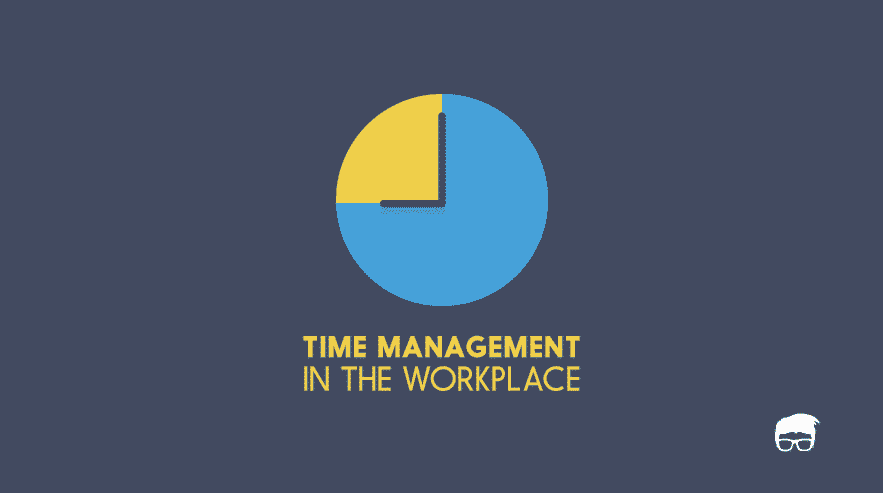Hustling and working hard are fundamental aspects of getting a job done. But when the time is limited and the workload is significant, only working smart can pull you to the finish line effectively and efficiently. Smart work is also when you segregate your tasks in a ratio of 80:20, based on priority, time, and resources, to ensure that you’re achieving maximum gain for every effort put in.
This is the Pareto principle or the 80/20 rule that is proven to work in many aspects of life, from business to academics.
What Is The Pareto Principle?
The Pareto principle is a theory that states that almost 80% of the results in a given situation come out of 20% of the inputs.
In simpler terms, the rule concludes that there is an unbalanced equation between inputs and outputs. This means that if you want to increase efficiency, you need to focus on improving the inputs that generate most of your results. For example:
- 20% of employees are responsible for 80% of the company’s results.
- 20% of software issues result in 80% of crashes.
- 20% of the customers will result in 80% of the revenue.
- 20% of productivity will sum up to 80% of the day’s work done, and so on.
The Pareto principle has several names, all based on different understandings over time. Some call it the 80/20 rule, which is the most common. Others call it the Principle of Factor Sparsity and even the Law of the Vital Few.
How Does Pareto Principle Work?
The Pareto principle focuses on the 20% of inputs that create the most impactful results. If you can identify and improve that 20%, you’ll be able to generate greater value for your organisation or project.
For example, if you are a business manager, investing in developing the skills and abilities of your top 20% of employees can have a much bigger impact on your performance than investing in the other 80%.
Similarly, if you’re working in marketing or sales, focusing your efforts on the top 20% of your customers can lead to better results than targeting a wider group. This is because these customers are likely to be the most valuable and worth investing in.
The Pareto principle can also be used to identify areas of waste or duplication, allowing you to streamline your processes and increase your efficiency. By focusing on the 20% that matters, you can ensure that your efforts go into the most important areas and produce the best results.
Origins Of The Pareto Principle
The Pareto principle was first observed by Italian Economist Vilfredo Pareto, who drew out a connection between population and wealth in Italy back in 1895. According to his observation, 20% of Italy’s population owned 80% of its land.
He conducted extensive surveys to find out similar patterns in various nations and developed a logarithmic mathematical model to show this non-uniform distribution of wealth.
After this research, Dr Joseph Juran, an electrical engineer from America in the 1950s, utilised the Pareto principle to develop that in any group of factors contributing to a common effect, only a select few factors account for the bulk of the impact. He coined the terms‘ vital few’ from the ‘good many’ and developed a universal principle that applied in many areas, not just the economy. Juran concluded that this principle solved many problems with quality control, which is now one of the essential fields in business and industries.
Applications Of The Pareto Principle
The Pareto principle sees application across multiple fields — from economics and finance to management, marketing, project management, and business process improvement.
Here are some:
Managing Time
20% of efforts can lead to 80% of productivity.
For example, 20% of your efforts on the core elements will give you 80% of the results if you are working on a project. In terms of time management, this could mean focusing your efforts on the most important tasks and delegating the rest.
Managing Businesses
20% of team members contribute 80% to the overall success of a business.
In any workplace, there is a massive disparity between performing and non-performing employees. Usually, 20% of the team members contribute 80% to a business’s overall success and productivity.
Optimising Revenue Generation
20% of the clients bring 80% of the revenue.
Studies show that 20% of customers account for 80% of a company’s total revenue. Likewise, 20% of your product lines account for 80% of your purchased items. Product diversification, hence, is not always the solution.
Managing Personal Relationships
20% of the problems cause 80% of the impact on relationships.
Most of the time, it’s a small issue that causes major disruption and disharmony in relationships. Identifying and targeting these problems can lead to better understanding between the parties.
Managing Goals
20% of focused efforts lead you 80% closer to your goal.
Identifying and focusing on the key areas you want to achieve will help you prioritise your efforts, resulting in better productivity. When you apply the 80/20 principle in managing goals, you can point out precisely what about yourself is pulling you behind.
Focusing on the areas with a greater impact can ensure that your time, energy and resources are utilised optimally.
Solving Problems
20% of issues cause 80% of headaches.
When faced with a problem, focus on the core issues first and identify their root causes. The 80/20 principle can help you analyse the issue and determine what is causing the majority of problems. This will allow you to concentrate on those areas that need more attention and solve your overall problem more efficiently.
Advantages Of The Pareto Principle
The Pareto principle not only offers a useful way of looking at problems but also has some other advantages.
- Way to quickly identify areas of improvement: The Pareto principle works by evaluating the efficiency of a process or system and highlighting those elements that are most important and most likely to yield the greatest results. By utilising this principle, it is possible to quickly identify areas that need improvement, allowing for efficient resolution.
- Helps prioritise tasks: It is a great way to help prioritise tasks and understand which tasks are the most important. This can help you focus on tasks with the greatest impact and rewards rather than wasting time and energy on less productive activities.
- Helps in optimising resources: It helps organisations gain insight into which activities will yield the greatest rewards. This allows organisations to create strategies that ensure their resources are used efficiently and effectively, leading to greater profits.
- Helps make better decisions: By looking at problems through the lens of the Pareto principle, it is possible to identify 20% of the most important activities and focus on those. This can help organisations make better decisions about allocating resources and personnel for maximum results.
Disadvantages Of The Pareto Principle
While the Pareto principle can help make better decisions, it has some disadvantages.
- Reduced flexibility: By focusing on the most important activities first, organisations may have less flexibility in responding to changing situations. This could mean that they miss out on opportunities or new technology as they are slow to react.
- Lack of creativity: By following the Pareto principle, organisations may become too focused on their existing processes and techniques. This could lead to a lack of creativity and innovation in problem-solving.
- Unrealistic goals: The Pareto principle does not take into consideration that some goals may be too difficult or unrealistic to achieve. If organisations only focus on the most important tasks, they may miss out on the smaller but equally important goals that could lead to long-term success.
- Unrealistic expectations: Following the Pareto principle could lead to unrealistic expectations of employees or customers. This could create a situation where people are expected to achieve more than is realistically possible, which can be demoralising and cause burnout.
Challenges Of Pareto Principle
It’s not just the unrealistic expectations that the Pareto principle can cause. It also presents a few challenges when it comes to implementation:
- Minimal Effort: One of the most common misconceptions about the 80/20 rule is that it is often mistaken for minimal effort. This is not true. Although the rule allows for a greater focus on the most important tasks and activities, these are by no means trivial or ‘easy’ to complete.
- Measuring Results: It can be difficult to measure the results of applying the Pareto principle as there is no exact way to do so. Different measures, such as customer satisfaction or financial performance, may need to be adopted.
- Inaccurate problem-solving: There is a risk of misidentifying important activities when looking at problems through the lens of the Pareto principle. It is possible to miss out on key solutions by focusing solely on those that will have an 80/20 impact.
- Wrong application: Considering the context when applying the Pareto principle is important. It should not be applied blindly and without thought as it can produce inaccurate results, depending on the situation.
- Time investment: It can take significant time to accurately identify a problem’s most important elements. This requires careful analysis, which may be difficult when time is limited.
- Departmental Flaw: There may be a significant difference between the bigger picture and what is being implemented on the ground. This could lead to issues in implementation, as well as having an impact on the overall performance of the organisation.
Examples Of The Pareto Principle
While the 80/20 rule is primarily used in business, it can be applied to almost any situation. Here are some examples of how the Pareto principle is used:
Wealth Distribution
The 80/20 theory was given a comprehensive form in 1992 by the United Nations Development Report, which stated that the distribution of global income is uneven. The Distribution of World GDP 1989 reports state that 20% of the world’s population receives 82.7% of the world’s income.
Technology
Microsoft tackled its software issues using the Pareto principle. They realised that out of all the bugs, only 20% were responsible for 80% of all the errors, and 1% of the bugs caused all the mistakes. This helped them identify the flaws in the code and develop an error-reporting tool for the future.
Public Health And Safety Management
Based on a survey conducted in New Zealand, which observed around 1000 children from birth, it was deduced that 20% of the population was availing 80% of the public services, “we found that the same people use most of the national health service, the criminal courts, insurance claims for disabling injury, pharmaceutical prescriptions and social welfare benefits,” said Terrie Moffitt, co-author of the research from Duke University, North Carolina. The analysis indicated that a long-term investment is required for disadvantaged children to decrease their future dependencies on public services.
Bottom Line?
The 80/20 rule can lead any business and individual to the road of success. However, it is just an observation and not a law of nature.
By establishing what must be done first, where to put in the maximum effort and resources and how to manage time, anyone can achieve 80% of profitable results.
The 80/20 rule doesn’t agree with the idea that one should stop at 20% of the road to make an effort. Consistency in efforts is required throughout to finish that bridge. Focusing on the 20% in the initial stages will enable more significant results with top quality, resources, time, and attention. The rest of the magic happens when an individual goes beyond their way to pay attention to details.
Go On, Tell Us What You Think!
Did we miss something? Come on! Tell us what you think about our article on Pareto principle – 80/20 rule in the comments section.
A startup consultant, digital marketer, traveller, and philomath. Aashish has worked with over 20 startups and successfully helped them ideate, raise money, and succeed. When not working, he can be found hiking, camping, and stargazing.









